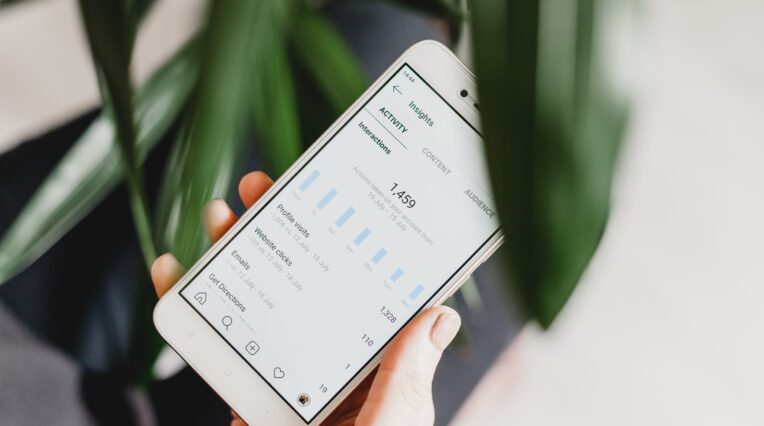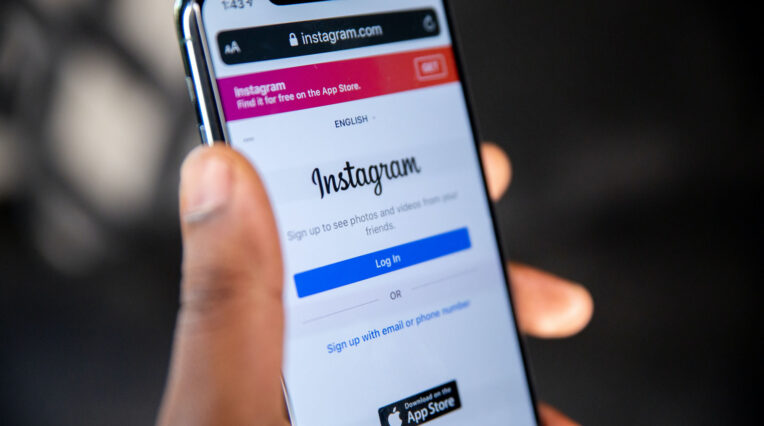31/07/2021
Paid media for B2B marketing

In this guide, we’ll cover:
- The differences between owned media, earned media and paid media
- Paid search and paid social advertising
- Online media in B2B marketing
- Online platforms: Google, Bing and LinkedIn
- Google search vs Google display network
- Sophisticated targeting with Google display
- Effective paid media tips and strategies
Introduction
Although the exact figures do vary, it’s said that on average, an individual sees upwards of four thousand adverts per day. In a world of ever increasing noise, brands are having to work a lot harder to reach potential customers, both online and offline, and effectively engage with them.
In online marketing, organic listings on the search results pages are no longer enough for the majority of marketers. Many businesses are turning to paid online advertising to develop their online presence, build brand awareness and drive new customers to their website or store.
With a window into the personal networks of millions of people, B2C marketers use online paid media to great effect. Provided it’s done right, it can also be an incredibly valuable and effective component of a B2B marketer’s strategy.
In this guide, you’ll learn about what the differences are between paid search and paid social advertising, sophisticated targeting techniques and the various strategies and channels that have significant value for B2B businesses.
Let’s start at the beginning: What is paid media?
The digital marketing trifecta: three essential strategies for your brand.
There are three main types of marketing content that should feature in
your marketing strategy.
Owned media is content that you own yourself – your website or blog for example. You (or your digital marketing agency) create and publish it and thereafter promote it via online advertising.
Earned media is content that others create or share about you. This could include a blog post about you or your products, or posts shared on social media that are published by a third party. This type of content has a high level of authenticity and usually comprises of recommendations about your product or service; which could include positive as well as negative remarks.
Paid media is essentially advertising – content that you pay to be displayed across the Google and Bing search and display network. Paid media can include any type of advertising, including offline traditional advertising; such as tv advertising. However, this guide will primarily focus on online channels as it is continuously evolving, and often misunderstood or underused by brands.
We’ll look at two types of paid media advertising: search engine and social media.
Paid search engine marketing
With search engine marketing, you pay to feature prominently in search listings. Whether your paid listing features or not will depend on what people are searching for. When setting up a new campaign, you define which search words and phrases you would like to bid on and appear for.
Often, the popular keywords will be more competitive amongst advertisers and ultimately more expensive. It is fine to bid on these terms if they are highly significant to your business. However it is beneficial to conduct keyword research and analyse the average search volumes for the alternative keywords you could use that refer to or relate closely to your product or service.
Paid social media advertising
Social media platforms have millions of users across the globe, with each one appealing more to different demographics, and offering different marketing possibilities. Paid social advertising involves paying to have an ad appear in front of the right user, in the right place and the right time. This is made possible by using a variety of demographic data and usage
patterns available.
There’s huge potential in social media marketing, but remember that as a B2B marketer, you’re most interested in targeting people in a business capacity rather than a personal capacity.
Online media in B2B marketing is growing fast
The following stats indicate how rapid the B2B industry is growing via online advertising:
- 77% of B2B marketers rate online advertising as a high priority (Regalix)
- B2B ecommerce is predicted to be worth $1.13 trillion by 2020 (Forrester)
- 71% of B2B researchers begin with an internet search (LinkedIn)
- 2018 saw a 28% increase in businesses using video in their marketing (Experian)
Online platforms: Google, Bing and LinkedIn
Various online platforms allow you to run paid media campaigns. Each one has its own merits, and the one you choose will depend on your product, audience and marketing strategy. Here we’ll look at three that are particularly suited to B2B advertising: Google, Bing and LinkedIn.
Google is the world’s most frequently visited website and the number one search engine, with an average of 3.5 billion searches carried out every day. Its massive volume of traffic means it’s the go-to platform for digital marketers, and its paid advertising platform is hugely popular.
Google Search vs Google Display Network
The Google Search Network shows your ads based on what users are searching for in any given moment. If you sell recycling services to manufacturing businesses in London, you can run a campaign that serves your ad to people searching those words. They’re powerful because – when done well – your ad will be presented to somebody searching for exactly what you offer.
The Google Display Network lets you place ads on websites outside of Google. To be part of the network, a website signs up to using Google AdSense. Any website can use AdSense, and Google say that there are 3 million websites in the network – reaching 90% of internet users. That’s a lot of internet users that you have the potential to reach.
Sophisticated targeting with Google Display Network
Whilst your search campaign will target users who are actively searching for your products or services, based on the keywords you are bidding on, the Google Display Network has some more sophisticated options for getting your ad in front of the right audience.
Contextual targeting
Google will take your list of keywords and ad copy and match it to websites that are using AdSense that it considers to be relevant to your business. It can then display your ad on those websites. For example, if you’re an intellectual property consultant, your ad could appear on a website that offers advice about taking a new product to market or launching a new business.
Behavioural targeting
Google will serve your ads to people based on their browsing history. If someone consistently researches how to apply for a trademark, Google will put them in an audience group interested in business intellectual property. You can then target this specific audience with your ads.
Demographic targeting
As the name suggests, you can target your ads based on demographics (predominetly age and gender). Whilst it’s not as sophisticated as the targeting options based on browsing behaviour, it’s still incredibly useful for laser-targeting potential customers (if you know this level of detail).
Whilst Google reigns supreme, B2B marketers shouldn’t ignore the UK’s second largest search engine, Bing. Owned by Microsoft, it handles an estimated 15%-25% of daily internet searches.
As Google has gone from strength to strength in the services it offers advertisers, Bing has worked hard to keep up and has greatly improved its advertising capabilities in recent years. Bing is especially significant for B2B marketers as the core user demographic is the over 45s. Typically, over 45s are more likely than their younger counterparts to hold senior positions in businesses, therefore it’s an interesting prospect if you’re trying to reach decision makers.
Because fewer businesses are advertising on Bing, it’s also cheaper. There’s less competition for search terms, which means it costs less per click and you’re more likely to get conversions.
Bing has another trick up its sleeve – voice search. By 2020, it’s estimated that 50% of web searches will be using voice. This presents exciting opportunities for marketers, and Bing’s association with the three leading voice search consoles – Amazon’s Echo, Apple’s Siri and Microsoft’s Cortana – put it in a good position to become a key player in the market.
LinkedIn should also be a strong candidate to feature in your B2B marketing mix because its primary purpose is to connect business professionals. People use it in a professional capacity, so unlike other social media platforms such as Facebook and Twitter, users are more likely to be in work mode and will be in the right frame of mind to make business purchasing decisions.
For B2B marketing, the real power comes in the ability to target users based on job title, sector, business name and location. Whatever type of business you sell to, you’ll likely be able to find prospects on LinkedIn and build ad campaigns to target them. For example, if you sell directly to CEOs, you can choose just to target people with that title. If you sell marketing services, you can choose to target people with “marketing”, “PR” and “communications” in their job title.
Effective paid media tips and strategies
Making a success of paid media in B2B marketing isn’t just about knowing which platforms are most suited to your needs. You need to ensure that the campaigns are executed effectively.
Have a clear strategy
With any marketing activity, it’s important to have a clear business strategy that you’re trying to achieve. Ask yourself: do you want to grow the business with a particular type of client or in a specific market? Are you looking to increase the sale of high value products, or looking to sell higher volumes at lower prices? These kinds of business decisions will have a huge impact on how you should approach paid media and need to be firmed up before you embark on any activity.
Know your audience
How well do you really know your target audience? Have you carried out customer research and created customer personas? Without having an insight into who your audience are and what their motivations and problems are, you’ll struggle to make a huge impact with your paid media advertising.
Consider using video
Over and over again we hear about how video is becoming increasingly important in online advertising. With smartphone technology and all-you-can-eat data plans, users are viewing more and more video on the go. It’s never been easier to embed video in your ads and on your website itself. Brands that don’t embrace video in their marketing could see themselves getting left behind.
Test, test and test again
One of the many great things about digital marketing is the ability to monitor the performance of your ads and consistently make changes to improve its success. With the ability to analyse the most up to date statistics on how many people are clicking on your ads and who they are, we are able to test different ad formats and content and get a really good idea of what works best.
Tip: You could run multiple versions of an ad concurrently to see which version is performing best, and with whom. Why not write three ad headlines each leading with a different benefit, to see which is most popular with different audience groups?
Get emotional
Humans are emotional creatures. Despite our best efforts to be rational and calculated, emotion plays a huge part in our decision making. When writing or designing your ads, try to appeal to your target audience’s emotions. Very few people actually want to look at advertising, and you have a very limited period of time to capture their attention. If your ad can make them feel an emotion – such as envy, excitement, pride or fear – then you’re far more likely to be successful.
Have a clear and direct CTA
The call to action is a crucial part of any ad or piece of online content. You’ve got their attention, they’re feeling excited or envious or fearful, now what do you want them to do? Make it easy for them – include a clear and direct call to action i.e “download our free guide” or “find out more”.
Be consistent
As your marketing grows, you may find that you’ve got content across several online platforms. It’s crucial for building trust with your customer that the assets you have across the web are consistent. If you have had some graphics designed for your website, then use elements of this in your display ads. If you use a certain tone of voice, then make sure that it’s carried through when you’re writing headlines for your text ads. Finally, if you use specific terminology to describe your products, then don’t start using different phrases in your advertising content.
Choose your words wisely
You need to get your key message across in as few words as you can when advertising online. When writing your headline and body text, make sure every single word is working hard for you. You have too little space to waste word count on superfluous words that don’t add any value to your message. Try to follow the advertiser’s rule for your written ad content: Attention, Interest, Desire, Action (AIDA). Following these stages will help you to grab your target’s attention, then make them interested, create desire and drive them to act. The final act depends on what you’re trying to achieve, which could be either to drive conversions, increase ROI or download a guide.
Don’t let your copy go stale
Unlike print advertising, where once it’s printed it’s printed, online advertising lets you change your ad content as you please. Don’t fall into the trap of setting up your ad campaigns and leaving them to run without ever checking in on them. The audience you’ve targeted may see your ad more than once, and if they’ve been seeing exactly the same ad for the last six months, it could start to do your brand more harm than good.
Make sure you update your ads. If you’re using images, refresh the pictures. If you’re running a time-limited offer, put that in the ad so it feels current.
Conclusion
As our personal and work lives become more and more entwined with digital devices, online paid media is becoming an increasingly important part of the B2B marketing mix.
Whilst content marketing lends itself to earned and owned channels, paid media usually focuses on search engine and social media advertising. For B2B marketers, by choosing the platforms that people use during business hours and executing campaigns strategically, the opportunities to grow sales and increase brand awareness are huge.





